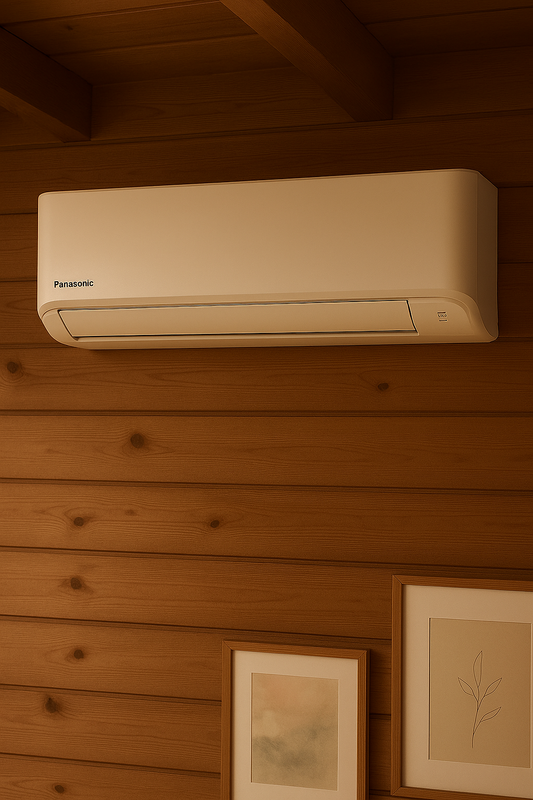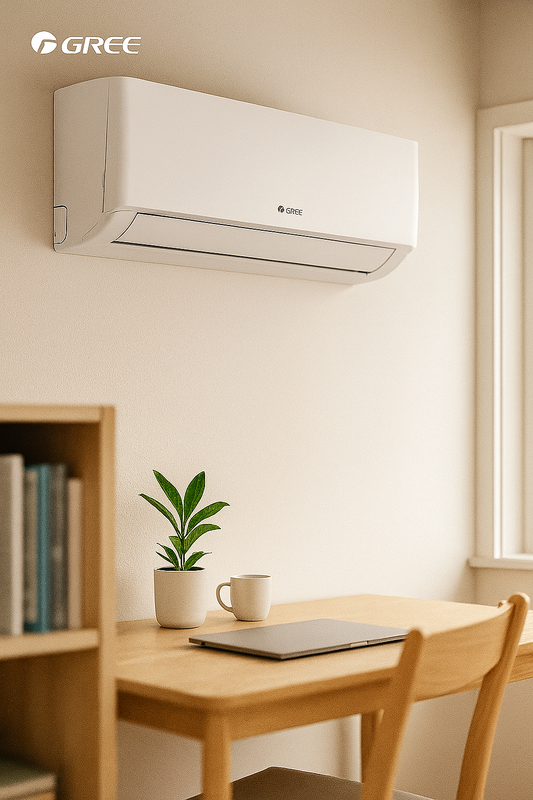Installation av Förbränningstoalett
Inledning
Att installera en förbränningstoalett är ett effektivt sätt att hantera avfall på platser där traditionella avloppssystem är svåra att installera eller underhålla. I denna artikel kommer vi att utforska processen för att installera en förbränningstoalett, dess fördelar och användningsområden, relaterade tekniker och vanliga frågor.
Definition och Bakgrund
En förbränningstoalett är en typ av toalettsystem som använder höga temperaturer för att förbränna avfall till aska och vattenånga. Istället för att använda vatten för att transportera avfallet till en avloppsanläggning, förbränns avfallet helt eller delvis. Denna metod minskar avfallsmängden och eliminerar behovet av traditionell avloppsanläggning.
Fördelar och Användningsområden
Förbränningstoaletter har flera fördelar. De kräver inte anslutning till avloppssystem vilket gör dem lämpliga för platser där sådana system är svåra att installera, som i avlägsna stugor eller båtar. Dessutom minskar de vattenförbrukningen och avfallsmängden, vilket gör dem miljövänligare än traditionella toalettsystem.
- Miljövänligare än traditionella toalettsystem
- Lämplig för platser utan avloppssystem
- Minskar vattenförbrukning och avfallsmängd
Relaterade Tekniker, Begrepp eller Variationer
Det finns olika typer av förbränningstoaletter, inklusive elektriska och gasdrivna modeller. Vissa modeller kan även använda avfallets värmeenergi för att producera elektricitet eller värma vatten. Det är viktigt att välja rätt typ av förbränningstoalett beroende på platsen och behoven.
Vanliga Frågor (FAQ)
-
Hur fungerar en förbränningstoalett?
En förbränningstoalett använder höga temperaturer för att förbränna avfallet till aska och vattenånga. -
Är förbränningstoaletter luktfria?
Ja, förbränningstoaletter eliminerar avfall genom förbränning vilket eliminerar lukten. -
Vilka platser är lämpliga för förbränningstoaletter?
Förbränningstoaletter är lämpliga för platser där traditionella avloppssystem är svåra att installera, som avlägsna stugor eller båtar.
Sammanfattning
Att installera en förbränningstoalett är ett effektivt sätt att hantera avfall på platser där traditionella avloppssystem är svåra att installera eller underhålla. Denna teknik erbjuder flera fördelar, inklusive minskad vattenförbrukning och avfallsmängd samt möjligheten att vara miljövänligare. Genom att förstå processen för installation och dess användningsområden kan man dra nytta av denna innovativa lösning.
Installation Process
The installation process for a combustion toilet involves several key steps to ensure proper functionality and safety. It is important to carefully follow the manufacturer's instructions and any local regulations regarding the installation of such systems. Here are some common steps involved in the installation process:
- Site Assessment: Before installation, it is crucial to assess the site and determine the best location for the combustion toilet. Factors such as ventilation, electrical access, and proximity to living spaces should be taken into consideration.
- Mounting the Unit: The combustion toilet unit needs to be securely mounted in place, ensuring stability and proper alignment with the exhaust vent and any necessary connections.
- Ventilation Setup: Establishing an effective ventilation system is essential to remove odors and moisture generated during the combustion process. This may involve installing fans and ductwork to safely expel air to the exterior.
- Electrical Connection: If the combustion toilet is electrically powered, it will require a proper electrical connection. This step should be performed by a qualified electrician to ensure compliance with electrical codes and safety standards.
- Testing and Calibration: Once the installation is complete, the combustion toilet should be thoroughly tested to ensure proper operation. This may involve calibrating temperature settings and familiarizing users with the system's controls.
Cost Considerations
When considering the installation of a combustion toilet, it is important to factor in the associated costs. In addition to the upfront purchase cost of the unit, there may be expenses related to installation, ventilation system setup, electrical work, and any necessary modifications to the existing space. It is advisable to obtain multiple quotes from qualified professionals to accurately assess the total cost of installation.
Environmental Impact
One of the key advantages of combustion toilets is their reduced environmental impact compared to traditional water-based systems. By minimizing water usage and significantly reducing waste volume, these systems contribute to conservation efforts and promote sustainable practices. Additionally, the ash produced from the combustion process can often be safely disposed of or utilized in an environmentally friendly manner.
Best Practices for Maintenance
Maintaining a combustion toilet is essential for ensuring its long-term functionality and efficiency. Regular cleaning and inspection can help prevent potential issues and prolong the lifespan of the system. Here are some best practices for maintenance:
- Regular Cleaning: Periodically clean the interior surfaces of the combustion toilet to remove any residue or buildup. Use appropriate cleaning solutions recommended by the manufacturer to avoid damaging sensitive components.
- Inspection of Components: Check the condition of gaskets, seals, and electrical connections to identify any signs of wear or damage. Addressing minor issues promptly can prevent more significant problems down the line.
- Ash Disposal: Properly manage the disposal of ash produced by the combustion process. Follow local regulations for safe disposal methods and consider utilizing ash for beneficial purposes, such as composting or soil amendment.
- Monitoring Ventilation: Regularly inspect the ventilation system to ensure proper airflow and effective odor removal. Clean or replace filters as needed to maintain optimal performance.
Regulatory Compliance
Before installing a combustion toilet, it is crucial to familiarize oneself with relevant regulations and building codes. Local authorities may have specific requirements for the installation and operation of such systems, particularly concerning ventilation, electrical work, and waste disposal. Compliance with these regulations is essential to ensure the safety and legality of the installation.
User Guidelines and Troubleshooting
Providing clear guidelines to users of the combustion toilet can help optimize its use and prevent misuse that could lead to issues. Additionally, offering troubleshooting tips for common operational concerns, such as error codes or unusual odors, can empower users to address minor issues independently, reducing the need for professional intervention.
Extended Warranty Options
Some manufacturers may offer extended warranty options for combustion toilets, providing additional coverage beyond the standard warranty period. Considering an extended warranty can offer added peace of mind and financial protection in the event of unexpected malfunctions or component failures.
Energy Efficiency
One notable aspect of combustion toilets is their energy efficiency, particularly in models that utilize waste heat to generate electricity or heat water. By harnessing the thermal energy from the combustion process, these toilets can contribute to overall energy savings and may even offset other energy demands in off-grid or remote locations.
Comparison with Composting Toilets
While combustion toilets and composting toilets both offer sustainable waste management solutions, they operate on different principles. Composting toilets rely on natural decomposition processes, while combustion toilets use high temperatures to reduce waste to ash. Understanding the distinctions between these systems can help individuals select the most suitable option for their specific needs.
Remote Monitoring and Control
Advancements in technology have enabled some combustion toilet models to incorporate remote monitoring and control features. This capability allows users to oversee the system's performance, receive maintenance alerts, and adjust settings from a distance, enhancing convenience and operational oversight, particularly in unmanned or isolated locations.
Case Study: Marine Applications
Combustion toilets have found extensive use in marine environments, where traditional sewage systems are impractical or prohibited. Their compact design, minimal water requirements, and odor elimination make them well-suited for boats, yachts, and maritime facilities, providing a sanitary and environmentally conscious waste management solution.
Fire Safety Precautions
Due to the high temperatures involved in the combustion process, proper fire safety measures must be observed during the installation and use of combustion toilets. This includes maintaining adequate clearance around the unit, using fire-resistant materials for surrounding surfaces, and ensuring the absence of flammable materials in the vicinity.
Odor Management Strategies
While combustion toilets effectively eliminate waste odors through the combustion process, additional odor management strategies may be employed to address any residual odors in the vicinity. This can include the use of natural air fresheners, ventilation enhancements, or the incorporation of odor-neutralizing materials in the toilet area.



